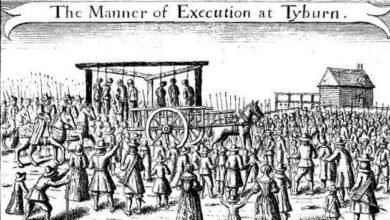John W. Taylor, New York’s only Speaker of the House


 Saratoga County resident John W. Taylor twice served as speaker of the United States House of Representatives, the only New Yorker to ever serve more than 24 hours as Speaker of the House, the leader of that body.*
Saratoga County resident John W. Taylor twice served as speaker of the United States House of Representatives, the only New Yorker to ever serve more than 24 hours as Speaker of the House, the leader of that body.*
Taylor was born on March 26, 1784, at home in the town of Charlton (which was still a part of the town of Ballston, Albany County, at the time). An historic marker on Charlton Road roughly marks his birthplace.
His parents, John and Chloe, were among a group of settlers who moved to Charlton from Freehold New Jersey in 1774, around the time the Charlton area was first settled by Europeans, according to an essay written in the 1950s by Levi Packard, principal of the Charlton Academy.
His father served as town supervisor, justice of the peace, associate Saratoga County judge and served one term in the state Assembly in 1797-98.
John W. was the fifth of 10 children. He attended Union College in Schenectady, graduating as valedictorian at age 19 in 1803. He then studied law with Samuel Cook, whose office was across from the courthouse on Middle Line Road near Ballston Center.
He also delved into the lumber business, living in Corinth for a few years. John launched his political career in 1811, winning a term in the New York State Assembly. He married Jane Hodge of Albany County, and together they had eight children. John moved back to Ballston Spa, where he moved on to the national political scene.
Taylor served the area in Congress for twenty years from 1813 to 1833, entering during the War of 1812 right through a tumultuous time of westward national expansion to the Mississippi River and beyond.
The nation’s politics were going through a new revolution. Americans were growing restless and resentful of the aristocrats who had been in control of national politics since its founding.
“The 1820s were a decade of discontent, born in depression, streaked with suffering and panic, shaken by bursts of violence and threats of revolution,” historian Arthur M. Schlesinger Jr. once wrote, explaining the rise of politicians like the rough-edged warrior Andrew Jackson, who became president after the 1832 election. Taylor despised Jackson.
History records John W. Taylor as among the writers and strong supporters of the Missouri Compromise of 1820. Under the compromise, Missouri was admitted to the union as a slave state, and Maine as a free state, on the condition slavery not be extended further westward in territories north of the Arkansas-Missouri border.
Page Smith, another noted historian, records Taylor as the author of a “sweetener” provision to get Southern votes – it said when a slave escaped, “such fugitive may be lawfully reclaimed” by their owner.
(You can read about Taylor’s complicated slavery politics here.)
Taylor was House speaker for four months in 1820-21, and also served a two-year term as speaker in 1825-27. He deserted his party and Jacksonian Democracy to support Whig President John Quincy Adams, one of those aristocrat leaders.
The son of Founding Father President John Adams, Taylor lost the speakership in the middle of Adams’ term as the President’s popularity sank.
After losing his bid for an 11th term in the election of 1832. Taylor returned to the practice of law in Ballston Spa for a few years. He had a fine house overlooking a bend on Gordon Creek. It still stands today on West High Street.
John W. Taylor was elected to the New York State Senate in 1840 but resigned in August 1842 after suffering a stroke. The following year he moved in with a daughter in Cleveland, where he died on September 18, 1854, at the age of 70.
After his death, his body was returned to his hometown, and he is buried in Ballston Spa Cemetery.
* The one-day role of Speaker of the House belonged to Rep. Theodore Pomeroy of Auburn, who served as speaker for 24 hours in 1869 to complete the term of Schuyler Colfax, who became vice president of the United States.
Stephen Williams is a retired newspaper reporter and the editor of the History Lives Here newsletter for the Saratoga County History Center The article is adapted from his collection of Daily Gazette columns, “Off the Northway,” published by the History Center.
This essay is presented by the Saratoga County History Center. Follow them on Twitter and Facebook.
Illustration: John W. Taylor Marker in Charlton (Peter Flass, 2016)




